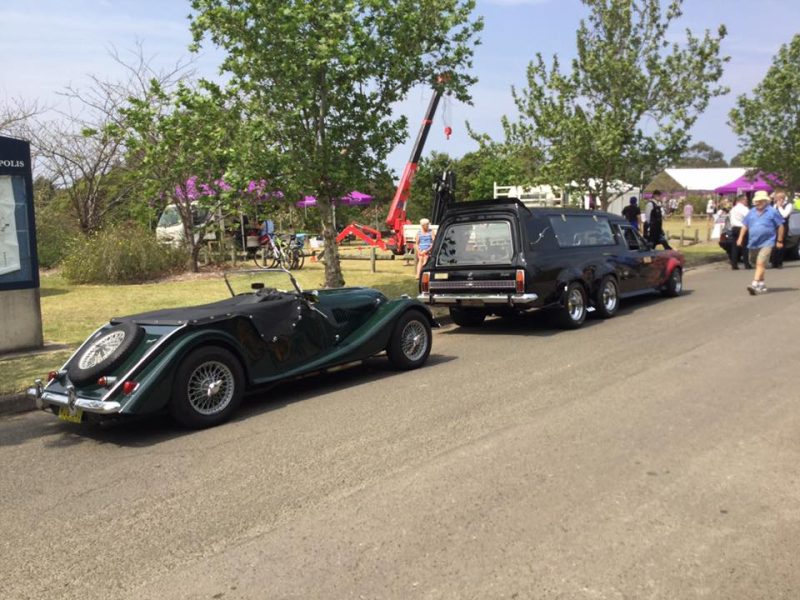
Light mobile
Knowing the principle of building a Stirling engine and having several boxes of ointment, pieces of wire and a flexible disposable glove or cylinder in our home stock, we can become the owners of a working desktop model.
1. Model of an engine powered by the heat of hot tea
We will use the heat of hot tea or coffee in a glass to start this engine. Or a special beverage heater connected to the computer we are working on using a USB connector. In any case, the assembly of the mobile will give us a lot of fun, as soon as it starts to work quietly, turning the silver flywheel. I think that sounds encouraging enough to get to work immediately.
Engine design. The working gas, and in our case air, is heated under the main mixing piston. The heated air experiences an increase in pressure and pushes the working piston up, transferring its energy to it. It turns at the same time crankshaft. The piston then moves the working gas to a cooling zone above the piston, where the gas volume is reduced to draw in the working piston. Air fills the working space ending with the cylinder, and the crankshaft continues to rotate, driven by the second crank arm of the small piston. The pistons are connected by a crankshaft in such a way that the piston in the hot cylinder is ahead of the piston in the cold cylinder by 1/4 stroke. It is shown in fig. one.
Stirling engine produces mechanical energy using temperature differences. The factory model produces less noise than steam engines or internal combustion engines. Does not require the use of large flywheels to improve the smoothness of rotation. However, its advantages did not outweigh the disadvantages, and it ultimately did not become as widespread as the steam models. Previously, Stirling engines were used to pump water and propel small boats. Over time, they were replaced by internal combustion engines and reliable electric motors that needed only electricity to operate.
Materials: two boxes, for example, for horse ointment, 80 mm high and 100 mm in diameter (same or more or less the same dimensions), tube of multivitamin tablets, rubber or disposable silicone glove, styrodur or polystyrene, tetric, i.e. flexible plastic clamp with rack and pinion, three plates from an old computer disk, wire 1,5 or 2 mm in diameter, heat shrink insulation with a shrinkage value corresponding to the diameter of the wire, four nuts for milk bags or similar (2).
2. Materials for assembling the model
3. Styrodur is the material chosen for the plunger.
Tools: hot glue gun, magic glue, pliers, precision wire bending pliers, knife, dremel with sheet metal cutting disc and tips for fine work, sawing, sanding and drilling. A drill on a stand will also be useful, which will provide the necessary perpendicularity of the holes with respect to the surface of the piston, and a vice.
4. The hole for the finger should be perpendicular to the surface of the future piston.
5. The pin is measured and shortened by the thickness of the material, i.e. to piston height
Engine housing - and at the same time the cylinder in which the mixing piston works - we will make a large box 80 mm high and 100 mm in diameter. Using a dremel with a drill, make a hole with a diameter of 1,5 mm or the same as your wire in the center of the bottom of the box. It's a good idea to make a hole, for example with the stem of a compass, before drilling, which will make precise drilling easier. Lay the pill tube on the bottom surface, symmetrical between edge and center, and draw a circle with a marker. Cut out with a dremel with a cutting disc, and then smooth with sandpaper on a roller.
6. Insert it into the hole
7. Cut the piston circle with a knife or a ball
Piston. Made from styrodur or polystyrene. However, the first, hard and finely foamed material (3) is better suited. We cut it with a knife or a hacksaw, in the form of a circle slightly larger than the diameter of our ointment box. In the center of the circle, we drill a hole with a diameter of 8 mm, like a furniture stud. The hole must be drilled exactly perpendicular to the surface of the plate and therefore we must use a drill on a stand (4). Using Wicol or magic glue, glue the furniture pin (5, 6) into the hole. It must first be shortened to a height equal to the thickness of the piston. When the glue is dry, place the leg of the compass in the center of the pin and draw a circle with the diameter of the cylinder, i.e. our ointment box (7). In the place where we already have a designated center, we drill a hole with a diameter of 1,5 mm. Here you should also use a bench drill on a tripod (8). Finally, a simple nail with a diameter of 1,5 mm is carefully hammered into the hole. This will be the axis of rotation because our piston needs to roll accurately. Use pliers to cut off the excess head of the hammered nail. We attach the axis with our material for the plunger to the drill chuck or dremel. The included speed should not be too high. The rotating styrodur is first carefully processed with coarse sandpaper. We have to give it a round shape (9). Only then with thin paper we achieve such a piston size that fits inside the box, i.e. engine cylinder (10).
8. Drill a hole in the pin for the piston rod
9. The plunger installed in the drill is processed with sandpaper
Second working cylinder. This one will be smaller, and the membrane from a glove or a rubber balloon will play the role of a cylinder. From a multivitamin tube, cut a 35 mm fragment. This element is firmly glued to the motor housing over the cut hole using hot glue.
10. The machined piston must fit the cylinder
Crankshaft support. We will make it from another ointment box of the same size. Let's start by cutting out a template from paper. We will use it to indicate the position of the holes in which the crankshaft will rotate. Draw a template on the box of ointment with a thin waterproof marker (11, 12). The position of the holes is important and they must be exactly opposite each other. Using a dremel with a cutting disc, cut out the shape of the support in the side of the box. In the bottom we cut out a circle with a diameter of 10 mm less than the bottom. Everything is carefully processed with sandpaper. Glue the finished support to the top of the cylinder (13, 14).
13. Take care of complete tightness when gluing the balloon
Crankshaft. We will bend it from a wire 2 mm thick. The shape of the bend can be seen in Figure 1. Remember that the smaller shaft crank forms a right angle with the larger crank (16-19). That's what a XNUMX/XNUMX turn lead is.
15. Fastening elements of the elastic coating
Flywheel. It was made from three silver discs from an old disassembled disc (21). We put the disks on the lid of the milk bag, choosing their diameter. In the center we drill a hole with a diameter of 1,5 mm, having previously marked the center with the leg of a compass. Center drilling is very important for the correct operation of the model. The second, the same but larger cap, also drilled in the center, is glued with hot glue to the surface of the flywheel disc. I suggest inserting a piece of wire through both holes in the plugs and making sure that this axis is perpendicular to the surface of the wheel. When gluing, the hot glue will give us time to make the necessary adjustments.
16. Crankshaft and crank
18. Machine crankshaft and cranks
19. Installation of elastic shell with crank
Model assembly and commissioning (20). Glue a 35mm piece of multivitamin tube to the top air. This will be the slave cylinder. Glue the shaft support to the housing. Place the cylinder crank and heat shrink sections on the crankshaft. Insert the piston from below, shorten its projecting rod and connect to the crank with a heat-insulating tube. The piston rod operating in the machine body is sealed with grease. We put on short pieces of heat-shrinkable insulation on the crankshaft. When heated, their task is to keep the cranks in the correct position on the crankshaft. During rotation, they will prevent them from sliding along the shaft. Put the cover on the bottom of the case. Attach the flywheel to the crankshaft using glue. The working cylinder is loosely sealed by a membrane with a wire handle attached. Attach an unloaded diaphragm to the top (22) with a rod. The crank of the working cylinder, rotating the crankshaft, must freely lift the rubber at the highest point of rotation of the shaft. The shaft should rotate smoothly and as easily as possible, and the interconnected elements of the model work together to turn the flywheel. On the other end of the shaft we put on - fixing with hot glue - the remaining one or two plugs from milk bags.
After the necessary adjustments (23) and getting rid of excess friction resistance, our engine is ready. Put on a glass of hot tea. Its heat should be enough to heat the air in the lower chamber and make the model move. After waiting for the air in the cylinder to warm up, turn the flywheel. The car should start moving. If the engine doesn't start, we'll have to make adjustments until we're successful. Our model of the Stirling engine is not very efficient, but it works enough to give us a lot of fun.
22. The diaphragm is attached to the camera with a rod.
23. The relevant rules are waiting for the model to be ready.
See also:

